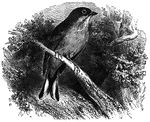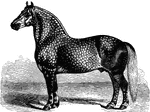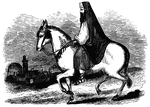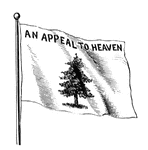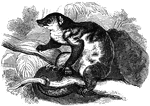
Fort Fisher
"First assault upon Fort Fisher, Sunday, January 15th, 1865. The One Hundred and Seventeenth New York…
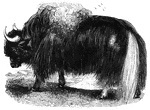
Yak
"The color of this animal in the wild and take, is black; the back and tail often white; the hair is…

Short Horn Cattle
"The head is small and finely formed, the eye bright and clear, the horn light in substance and waxy…

Hereford Cattle
"The hereford breed are of a medium or dark red color, with white faces and sometimes white on the throat,…
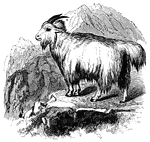
Rocky Mountain Goat
"Both male and female have small horns, and hair of a white color. They live in small flocks in the…

Billy Wilson Zouaves
"The ('Billy') Wilson Zouaves, at Tammany Hall, taking the oath of fidelity to the flag, April 24th,…

Fort Pulaski
"The bombardment of Fort Pulaski, second day, Friday, April 11th, 1862. General Quincy A. Gilmore took…
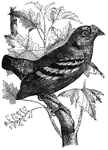
Green Calyptomena
Found in Java and Sumatra, the green calyptomena's namesake plumage helps it blend in with foliage.
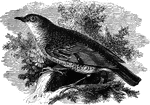
Golden Thrush
Also known as White's thrush, the golden thrush is native to Japan and Savabut migrates to Southern…
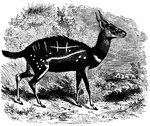
Guib Antelope
"About the size of a common deer, of a reddish-fawn color, but marked with white stripes along the back…
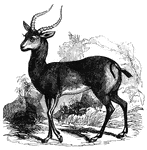
Pallah
"Four and a half feet long and three high. The general color is a deep red, and underr parts being white.…

Addax
"The body is five feet long, and height three feet. The general color is gray-ish-white, though the…
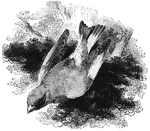
Green Grosbeak
Also known as the green finch, the green grosbeak frequents gardens, orchards, small woods, and cultivated…
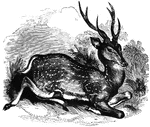
Axis Deer
"In size and general form it nearly resembles the common fallow-deer. The skin is at all times of a…
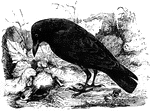
Carrion-Crow of Europe
The carrion-crow of Europe has been known to feed on decaying flesh, as well as young birds, shellfish,…
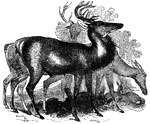
Male American Deer
"It is about the size of the European fallow-deer, and resmebles it in temper and character; the color…

Female American Deer
"It is about the size of the European fallow-deer, and resmebles it in temper and character; the color…
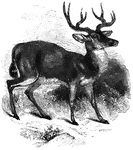
Mule Deer
"Is between the common deer and the American elk in size. Its horns are round and twice forked; the…

Gauzu-Viva
"Is a delicate little deer, only twenty-six inches in length. its aspect is said to resemble that of…

Green Woodpecker
The green woodpecker is found throughout Europe, and uses its beak to make holes in tree trunks to roost…
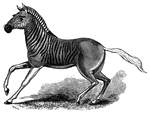
Quagga
"Its general color is brown, the head, neck, and withers striped or zebraed wth blackish-brown; the…

Dauw
"Is of a pale brown color; the underside of the body being whitish; head, body, and upper part of the…
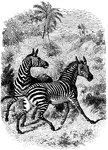
Zebras
"The ground color is white, or yellowish white, but the head, body, and legs to the hoofs are regularly…

White House Landing
"White House Landing, Pamunkey River, Va., the Grand Depot of the Commissariat and Ordinance Department…
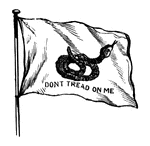
South Carolina flag
"Rattlesnake Flag of South Carolina, during independence of the states."—E. Benjamin Andrews,…

Union Flag
"Union Flag. The first recognized Continental Standard, raised for the first time January 2, 1776."—E.…
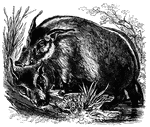
Guinea Hog
"It is of the size of a common hog; has long, narrow, straight ears, with a pencil of hair at the tips.…

Syrian Daman
"Is a foot long, of a brownish gray color above and white below. The skin without the hair is of a blackish…
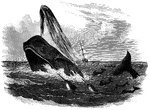
Sperm Whale
A sperm whale breaching up through the water. Its color is blackish above and white below.

Beluga Whale
"When young it is black, when mature white, sometimes having a yellowish or rosy tinge. It is twelve…
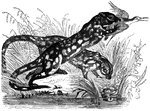
Spotted Martin
"Is eighteen inches long, with a tail nearly as long as the body; its fur is chestnut-color, spotted…

Banded Ant Eater
"It is about ten inches long, of a tawny color, marked with transverse bands of black and white. The…
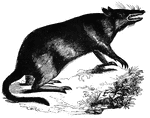
Long Nosed Bandicoot
"Having a long head, with the upper part of the snout much prolonged: the tail is long and tapering;…
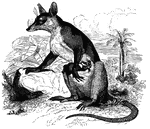
Common Opossum
"It has a pointed head, wide gape, numerous sharp teeth, a rough tounge, ears large and naked, small…
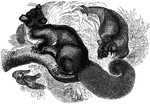
Sugar Squirrel
"It is about as large as our red squirrel; the tail rather longer than the body; the fur soft and beautiful;…
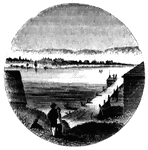
Chimney Point
Chimney Point Landing. This view is taken from the green in front of the inn at Chimney Point, looking…

Western Line of Barracks
Western line of barracks. There were four large buildings used for barracks within the fort, the walls…

Ethan Allen Tomb
Tomb of Ethan Allen as seen in 1851. Shortly thereafter, this original plaque disappeared. In 1858,…

Beloeil Mountain
Beloeil Mountain, this sketch is taken from the southeast angle of old Fort chambly, showing the rapids…

White-crested cockatoo
The white-crested cockatoo possess a distinctive crest of feathers it can raise or lower at will.
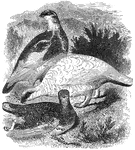
Ptarmigans
A trio of ptarmigans (also known as white grouses) found in colder regions at higher altitudes. They…
!["The broad-billed sandpiper.. [is] six and a half inches long, variegated above with black, rufous, and gray; beneath grayish-white, tinged with buffish-red; rare, but distributed throughout Europe." — Goodrich, 1859](https://etc.usf.edu/clipart/13000/13073/bblldsndpipr_13073_mth.gif)
Broad-Billed Sandpiper
"The broad-billed sandpiper.. [is] six and a half inches long, variegated above with black, rufous,…
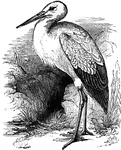
White Stork
Measuring about three feet in length, the white stork migrates to Europe during the summer, and back…
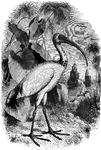
Sacred Ibis
Found throughout Africa, the sacred (or white) ibis was revered by the ancient Egyptians.
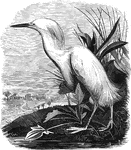
Great White Heron
White, often with a yellowish tinge, the great white heron of America closely resembles its European…
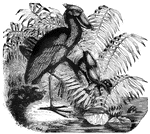
Balœniceps
About three feet, nine inches in height, the balœniceps is native along the banks of the White…

Great Bustard
Forty-five inches in length, the great bustard feeds on green wheat, grapes, trefoil, and other vegetable…
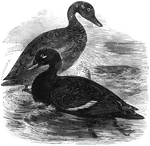
Velvet Scoter
Common in Europe and North America, the velvet scoter is also known as the white-winged coot.
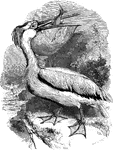
Common White Pelican
The common white pelican measures about five to six feet in length, with a wingspan of approximately…
